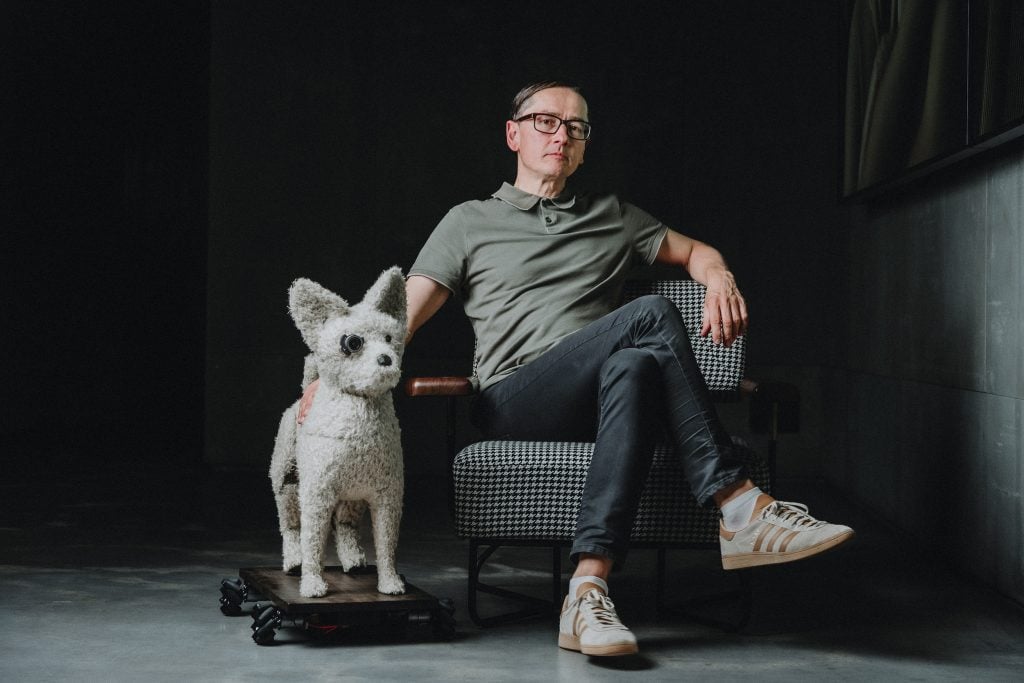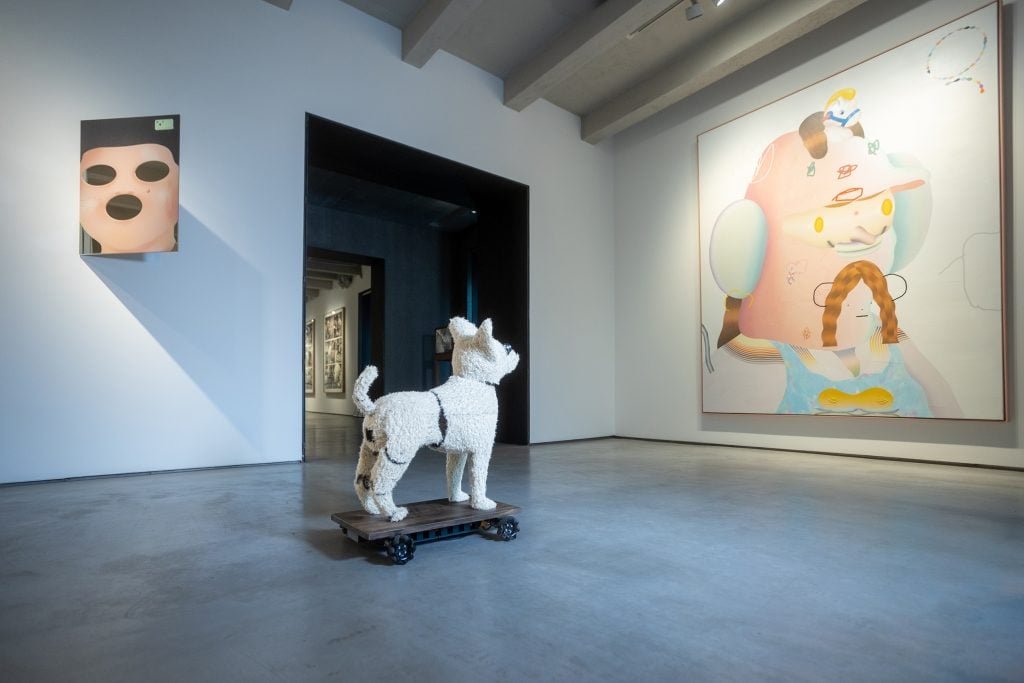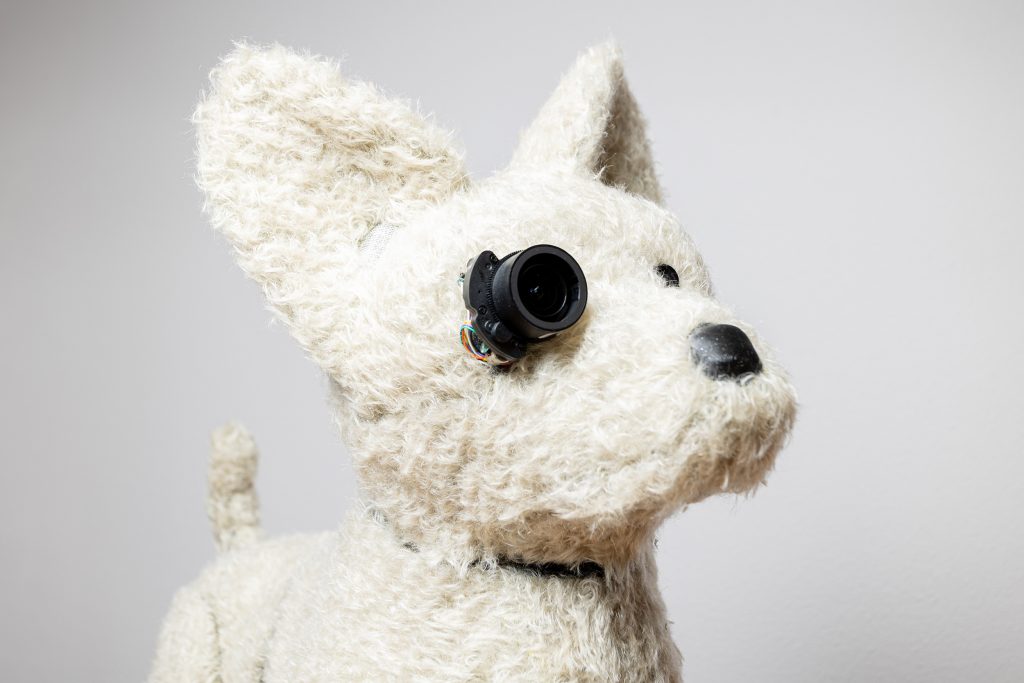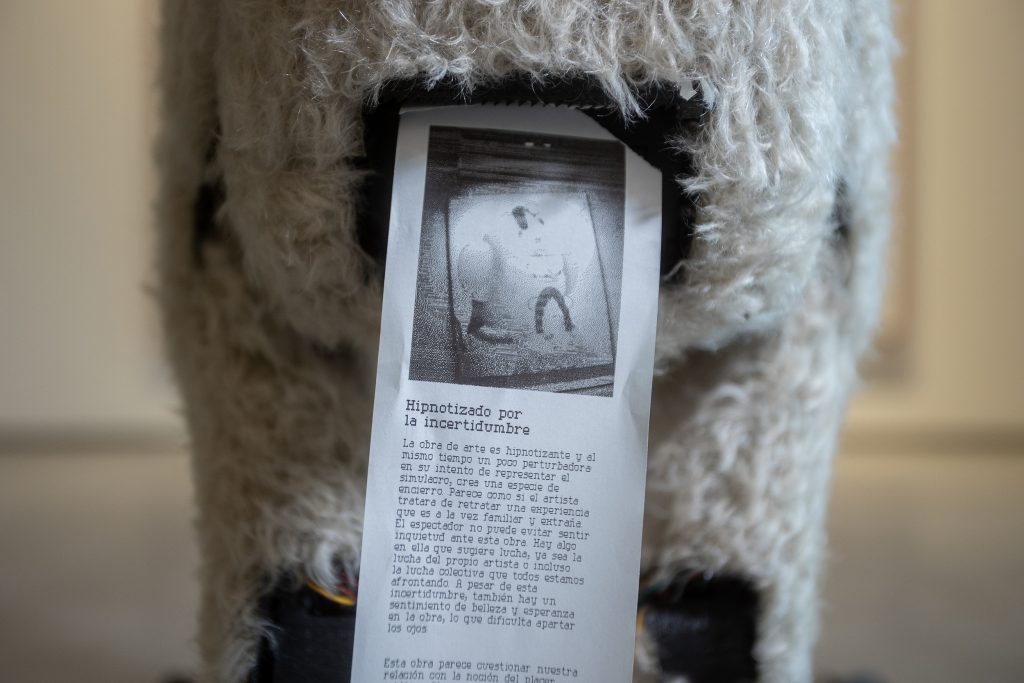Like you, German artist Mario Klingemann found himself overwhelmed by the sheer volume of AI-generated art. With the emergence of text-to-image tools in particular, artistic creation has been automated and commodified, he said, “an endless barrage of AI-created art to consume, critique or rather endure.”
“The more the machine can create,” he told Artnet News, “the more the human is pushed into the role of the weary spectator.”
His solution – or more likely, his riposte – is, well, more AI. To help people better interact with art, AI-generated or otherwise, Klingemann has developed a robotic dog, which can generate Algorithmically reviews visual artworks so you don’t have to.

Mario Klingemann and AICCA (2023). © Mario Klingemann, courtesy of Onkaos.
The furry doggie, named AICCA (or Artificially Intelligent Critical Canine), was trained on a body of visual art and artistic writing, making him well educated in color, composition, style, and semantics. Using his black-lens eye, he assesses physical artworks, before working with OpenAI’s GPT model to generate a concise art critique. This text is then printed on thermal receipt paper that is, uh, pulled out through the dog’s butt.
A handful of AICCAthe criticism of was collected on its Twitter account, and includes such gems as: “Art criticism is a form of reading, not writing.” Or even better: “Art doesn’t play with approval. He chews on the convention slippers and savors the surprise of his own bark.
The robot was unveiled in June at Espacio Solo in Madrid, with support from Colección Solo’s Onkaos programwhich supports new media projects.

AICCA (2023). © Mario Klingemann, courtesy of Onkaos.
Klingemann, however, is quick to point out that AICCA is far from being a robot art critic intended to replace human critics. It’s more of a “performative sculpture,” he said, meant to confront our overreliance on technology as it travels through art fairs, galleries and museums around the world.
“The goal of AICCA It’s less about challenging critics than offering an offbeat alternative perspective. It’s thought-provoking, even if that thinking is whether machines should be contemplating art in the first place,” he explained. “By doing something as personal and specialized as art criticism, it raises questions about the role that AI plays – and could play – in our lives.”

AICCA and his black-lensed eye. © Mario Klingemann, courtesy of Onkaos.
Klingemann is well placed to spark such a conversation. His interest in artificial intelligence was sparked early on by Marvin Minsky’s landmark 1986 book The society of the mindprompting him to experiment with generative adversarial networks beginning in the mid-2010s. Klingemann made a name for himself on odd pieces such as Memories of passers-by I (2019), as well as inventive projects like his standalone AI artist, Down.
It’s work that has given him a vision of how AI can be both a creative medium, a tool and a mirror: “My work offers a reflection, albeit sometimes distorted, of our time, of our hopes, our fears as we navigate this brave new world of technology.
Not that his work was devoid of a playful irreverence –AICCAafter all, is a dog who, as a Press release he says, “defecates” art criticism. According to Klingemann, who built the sculpture with Madrid-based robotics company Maedcore, it made sense to mount the printer on the back of the robot. That it happened to serve multiple metaphors was a happy coincidence.

An art review generated by AICCA © Mario Klingemann, courtesy of Onkaos.
“You’d think it’s a witty representation of the current state of AI. We’re buried under an avalanche of digital diarrhea, which could be politely called a ‘dump,'” he said. explain. “Alternatively, there is also the slightly more brazen suggestion towards the art world, which – let’s face it – can sometimes be obsessed with the art of spouting deep, if sometimes inscrutable, BS.”
Klingemann himself had the opportunity to wonder AICCAanalyzes of. Some were able to “identify hidden meanings or create associations,” he said, while others “were more like throwing darts at a board blindfolded.”
Here again, the robot dog, which Klingemann calls his “digital child”, remains at least for the moment a juvenile and rather naive, learning machine.
“Aren’t we all trying to make sense of the world, each in our quirky way?” he added. “I recommend taking his criticisms with a mixture of open-mindedness and a grain of salt – much like, I dare say, all art criticism.”
More trending stories:
A Norwegian father hiking with his family discovered a rock wall covered in Bronze Age paintings
Gnarled old tooth found in museum cabinet may hold key to understanding ancient hippo relative
Israeli first-grader stumbled across 3,500-year-old Egyptian amulet on school trip
Follow Artnet News on Facebook:
Want to stay one step ahead of the art world? Subscribe to our newsletter to receive breaking news, revealing interviews and incisive reviews that move the conversation forward.
